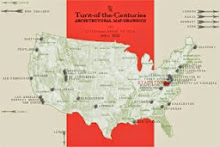Forgive my self-indulgence:Well, let's be honest. It's been a tough year so far. 2009 stinks! Why was 2008 so great? All personal entanglements aside, one reason 2008 was great was the garden I planted. No, not my tiny late tomatoes and greenish eggplants...the garden of ideas. The creative ideas came in little spring avalanches and I sowed the seeds into my notebook, a timely birthday gift from Christine, thankyou. Then I nurtured them and feverishly brought them to fruition. I spent the fall harvesting, in production and selling mode. It is time to sow the seeds again, and, alas, they are coming! I am thinking about the soon-coming transition from winter to spring, looking forward to more energy and less shivering in my studio. I know, it's Savannah Georgia. There must be something wrong with me, but My fingers are blue. Perhaps I will be able to shed my ever-present knit hat, grey sweater, and navy vest. you know, the standard uniform.
I am thinking about the soon-coming transition from winter to spring, looking forward to more energy and less shivering in my studio. I know, it's Savannah Georgia. There must be something wrong with me, but My fingers are blue. Perhaps I will be able to shed my ever-present knit hat, grey sweater, and navy vest. you know, the standard uniform.
I thought I was moving. But it turns out, I'm not. So here is what I'm working with. Not too bad but for the lack of sunlight. Good thing I work at night.






 Today, in church, I learned about the divinity of creativity:
Today, in church, I learned about the divinity of creativity:"The desire to create is one of the deepest yearnings of the human soul. No matter our talents, education, backgrounds, or abilities, we each have an inherent wish to create something that did not exist before.
Everyone can create. You don’t need money, position, or influence in order to create something of substance or beauty. Creation brings deep satisfaction and fulfillment. We develop ourselves and others when we take unorganized matter into our hands and mold it into something of beauty—"
"Remember that you are spirit[s] of the most creative Being in the universe. Isn’t it remarkable to think that your very spirits are fashioned by an endlessly creative and eternally compassionate God? Think about it—your spirit body is a masterpiece, created with a beauty, function, and capacity beyond imagination.
But to what end were we created? We were created with the express purpose and potential of experiencing a fulness of joy. Our birthright—and the purpose of our great voyage on this earth—is to seek and experience eternal happiness. One of the ways we find this is by creating things."
"The more you trust and rely upon the Spirit, the greater your capacity to create. That is your opportunity in this life and your destiny in the life to come. [T]rust and rely on the Spirit. As you take the normal opportunities of your daily life and create something of beauty and helpfulness, you improve not only the world around you but also the world within you."
 No photo can capture the simultaneous feeling of enclosure and expansiveness within a Savannah square. I'm recording these notions in drawing the "streetscape-in-the-round" of a square, similar to the facades by block drawings I am working on, as the architectural street wall that wraps the perimeter of the square. Within the square - a forest punctuated by monument(s) and crossed by brick walks that continue the sidewalk from the surrounding blocks. The Square forms the locus of a Ward, a neat unit of neighborhood measurement comprised of the blocks on all sides adjacent to the Square. A map from 1770 shows the first 6 Wards that set the pattern for the City's urban growth until the mid-1800s. I was pleased to find the measurements of the street rights-of-way recorded, in the expressive cursive script that pervade this map by
No photo can capture the simultaneous feeling of enclosure and expansiveness within a Savannah square. I'm recording these notions in drawing the "streetscape-in-the-round" of a square, similar to the facades by block drawings I am working on, as the architectural street wall that wraps the perimeter of the square. Within the square - a forest punctuated by monument(s) and crossed by brick walks that continue the sidewalk from the surrounding blocks. The Square forms the locus of a Ward, a neat unit of neighborhood measurement comprised of the blocks on all sides adjacent to the Square. A map from 1770 shows the first 6 Wards that set the pattern for the City's urban growth until the mid-1800s. I was pleased to find the measurements of the street rights-of-way recorded, in the expressive cursive script that pervade this map by 




































































